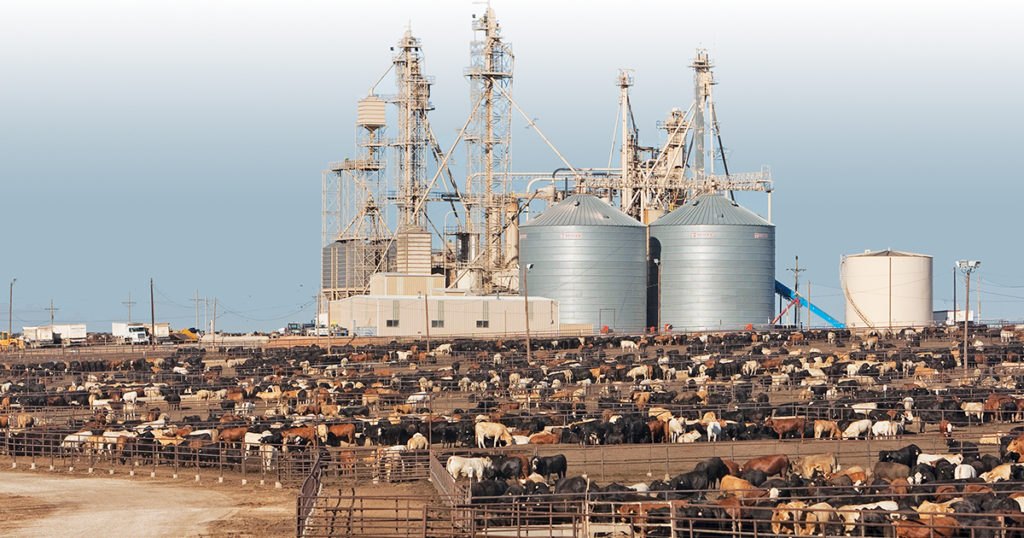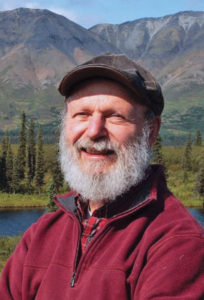

Terry Chapin is an emeritus professor of ecology at the University of Alaska Fairbanks. His research focuses on the ecological consequences of climate change and, more recently, our stewardship of and relationship to the natural world—work that resulted in his receiving the 2019 Volvo Environment Prize. His most recent book is Grassroots Stewardship: Sustainability Within Our Reach. We asked him to pose five questions about the future of food in an increasingly fragile environment.
1. Food is a tie that binds people with nature and the future of our planet. The threefold increase in the human population since World War II has necessitated a massive rise in food production. This increase in production, supported by fertilizers and pesticides—and requiring significant amounts of water—has additionally spurred the conversion of natural ecosystems to agricultural land. In the process, Earth has entered a new geologic epoch known as the Anthropocene. The resulting collateral damage includes the sixth major extinction event in the history of life, fishless dead zones in most of the world’s major estuaries, accelerating climate change, and globally dispersed synthetic toxins and plastics. With the human population and its food needs projected to rise another 50 percent by the end of this century, how can society meet this demand without destroying the planet?
2. Despite the boom in population over the past 75 years, continued agricultural expansion is neither essential nor inevitable. The rate of human population growth has declined by 50 percent since 1950, in part because people in many countries choose to have fewer children. Current food production levels could support the human population for years to come if redirected appropriately. For example, most industrially produced food is fed to livestock rather than directly to people, a system that necessitates using seven times more land for agriculture than if humans did not eat meat. In addition, about a third of agricultural production is thrown away. In developing nations, inadequate supply chains and storage facilities are to blame; in developed nations, the culprit is simply food waste. The environmental consequences of agriculture also depend on how it is done. Many small-scale farmers farm in ways that produce less pollution and more nutritious food. However, agricultural subsidies to large businesses and economies of scale place small farms at a competitive disadvantage unless people choose to buy food that is produced locally and in a more environmentally friendly way. How can households be persuaded to make choices that reduce the amount and environmental consequences of the food and other goods we buy?
3. Americans throw away 40 percent of the food they purchase, a symptom of developed nations’ widespread tendencies toward unnecessary resource consumption. Even though income and consumption levels have increased in many countries since World War II—in the United States, 85 percent of residents live above the poverty line—people’s general life satisfaction has not. For example, an individual in a developed nation uses, on average, 32 times more resources than does someone in a developing nation, in part by buying expensive or unneeded items. People in developed nations are therefore well positioned to improve the planet’s environment through more respectful consumption choices. Could life satisfaction of both rich and poor people be increased by greater appreciation of our interdependence with our planet, a reduction in unnecessary consumption, and a more equitable sharing of resources and opportunities across society?
4. The globalization of trade and travel spreads the consequences of local consumption throughout the world. Unfortunately, many communities could not survive without globalized trade. For example, like many states, Alaska has only a five days’ food supply within its borders and depends on regular food deliveries from elsewhere. Could support for local farms, restaurants, and other businesses reduce dependence on global food transportation, reduce risks of globally spread pandemics like Covid-19, and enhance the resilience of local economies while improving the diversity, freshness, and nutritional quality of local food options?
5. Studies have shown that the more time we spend in nature, whether in gardens, parks, or wilderness, the greater our concern for the environment. For many people, the pandemic has already reduced commuting and overtime work hours. Could this burgeoning shift ultimately lead to a larger change in social norms, away from our fast-paced work culture and toward greater shared concern for what we eat as well as for our environment, families, communities, nations, and world?

